Do Cats and Small Pets Get Along?
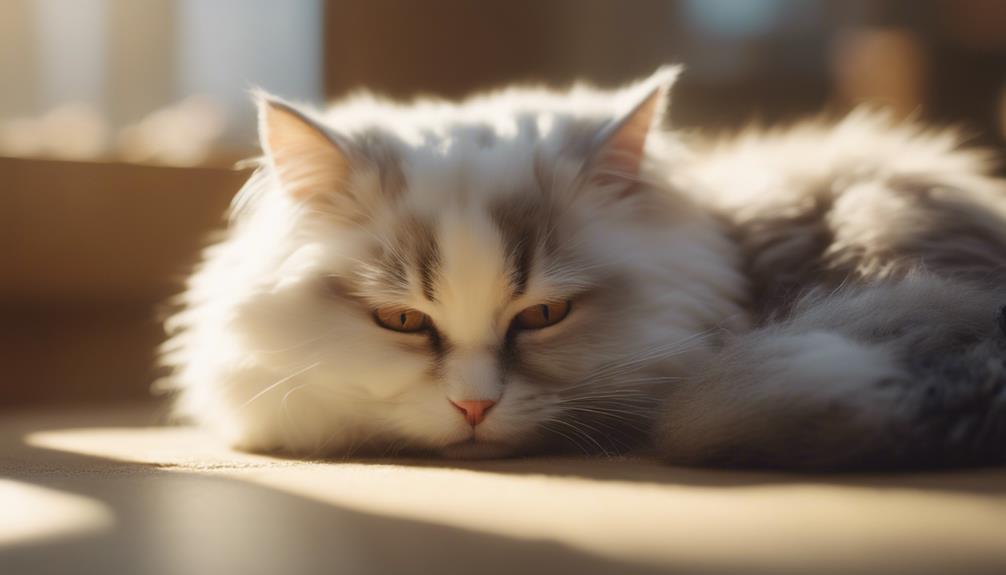
Cats and small pets can potentially get along, but there are key factors to consider when introducing them to each other. Firstly, the temperament of the cat plays a significant role in how it will interact with a small pet. Some cats may be more tolerant and gentle, while others may have a strong prey drive. Secondly, the small pet's species and size are important considerations. Cats are natural predators, so smaller animals like mice or birds may not be safe around them. However, larger small pets like rabbits or guinea pigs may have a better chance of coexisting peacefully with a cat. Finally, the introduction process should be gradual and supervised to ensure the safety of both animals. It's essential to provide separate spaces for each pet initially and gradually allow supervised interactions to gauge their compatibility. With careful consideration and proper introductions, cats and small pets can learn to coexist harmoniously.
Factors Affecting Cat-Small Pet Interaction
Factors influencing interactions between cats and small pets range from individual personalities to environmental conditions. Pet compatibility plays a crucial role in determining how well cats and small pets will get along. Understanding the specific needs and behaviors of different animals is essential for creating a harmonious environment. For instance, small pets that are prey animals may trigger a predatory response in cats, leading to potential conflicts. It's vital to consider the natural instincts of each species to prevent misunderstandings and ensure a safe coexistence.
Animal behavior also plays a significant role in cat-small pet interactions. Cats are known for their independent and territorial nature, which can affect how they interact with other animals in the household. Small pets that are more social or assertive may either intrigue or intimidate cats, influencing the dynamics between them. Creating opportunities for positive interactions and providing separate spaces for each pet can help reduce tension and promote a peaceful cohabitation. By considering both pet compatibility and animal behavior, pet owners can foster a positive relationship between their cats and small pets.
Understanding Cat Behavior Towards Small Pets
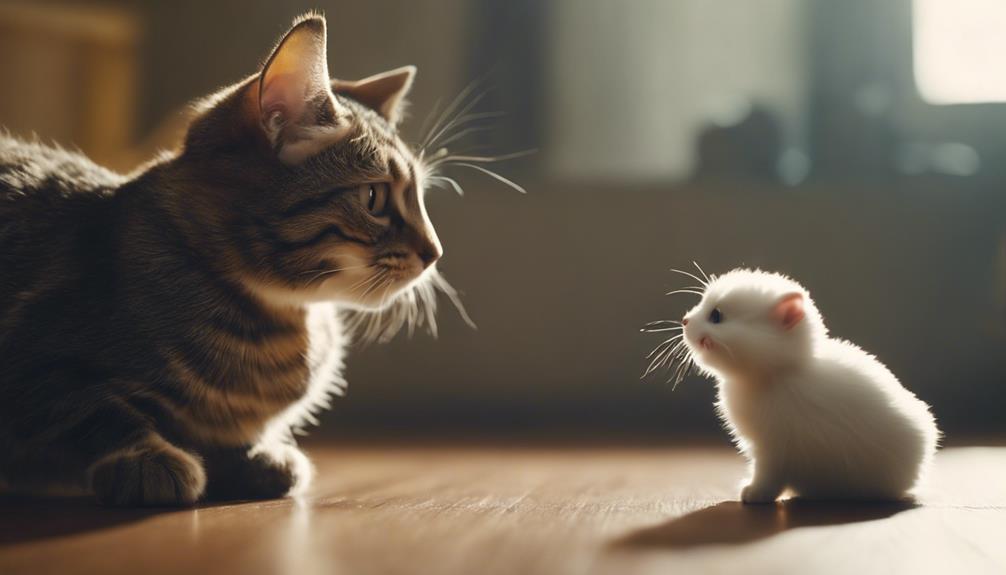
Understanding how cats behave towards small pets is crucial for fostering a harmonious environment in a multi-pet household. Cat behavior towards small pets can vary based on factors such as individual temperament, past experiences, and socialization. Cats are natural predators, and their predatory instincts might be triggered when they encounter small pets like rabbits, birds, or rodents. This behavior can manifest in stalking, chasing, or even aggression towards the smaller animals.
It's essential to monitor cat behavior closely when introducing them to small pets to ensure the safety of all animals involved. Some cats may view small pets as companions, showing curiosity and gentle behavior towards them. Understanding cat body language cues, such as dilated pupils, flattened ears, or a flicking tail, can provide insights into their interactions with small pets. Providing separate spaces for each pet to retreat to and ensuring supervised introductions can help mitigate any potential conflicts between cats and small pets.
Signs of Compatibility Between Cats and Small Pets
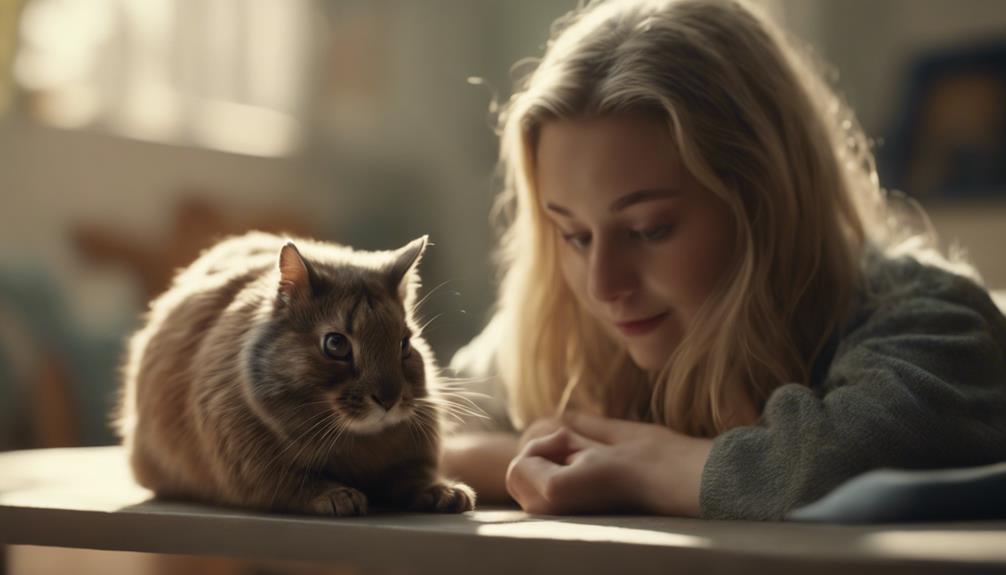
When introducing cats to small pets, it's crucial to observe their body language cues, as these signals can indicate compatibility.
Engaging in shared play activities can also demonstrate a positive relationship between cats and small pets.
Additionally, following peaceful cohabitation tips, such as providing separate spaces and proper introductions, can foster a harmonious environment for all pets involved.
Body Language Cues
Observing the body language cues exhibited by cats and small pets can provide valuable insights into their compatibility. Understanding communication and building trust between these animals is crucial for fostering a harmonious relationship.
When looking for signs of compatibility based on body language cues, consider the following:
- Relaxed Body Posture: A cat with a relaxed body posture around a small pet indicates comfort and potential compatibility.
- Friendly Approaches: Cats making gentle and non-threatening approaches towards small pets are more likely to get along.
- Playful Interactions: Mutual playfulness, such as chasing each other without aggression, suggests a positive relationship.
- Shared Spaces: Cats and small pets peacefully sharing common spaces without tension is a good sign of compatibility.
- Respectful Behavior: Observing respectful behavior like gentle nudges or headbutts can indicate a compatible relationship in the making.
Cats and small pets demonstrate compatibility through engaging in shared play activities. Playful bonding and interactive enrichment are crucial for fostering a harmonious relationship between these animals. By observing their interactions during play, pet owners can gauge the level of compatibility and comfort between their cat and small pet. Below is a table illustrating common shared play activities that can promote bonding and positive interactions between cats and small pets:
| Play Activity | Description | Benefits |
|---|---|---|
| Chasing Games | Cats and small pets chase each other around, promoting exercise and mental stimulation. | Encourages physical activity and mental engagement. |
| Toy Sharing | Sharing toys can help cats and small pets learn to take turns and cooperate. | Teaches sharing and cooperation skills. |
| Hide and Seek | Playing hide and seek can build trust and encourage problem-solving skills. | Enhances trust and mental stimulation. |
| Treat Time Together | Enjoying treats in each other's presence can create positive associations and strengthen the bond. | Promotes positive reinforcement and bonding. |
Peaceful Cohabitation Tips
To ensure harmonious cohabitation between cats and small pets, it's essential to recognize key signs of compatibility that indicate a positive relationship between these animals. When aiming for peaceful interactions, consider the following:
- Communication Strategies: Understanding how cats and small pets communicate can help prevent misunderstandings and conflicts.
- Bonding Techniques: Encouraging bonding through supervised interactions can foster a sense of companionship.
- Training Methods: Training both cats and small pets to respond to commands can promote mutual respect and cooperation.
- Enrichment Activities: Providing enriching activities can keep both cats and small pets mentally stimulated and less likely to engage in negative behaviors.
- Supervised Interactions: Always supervise interactions between cats and small pets to ensure safety and intervene if necessary.
Introducing Cats to Small Pets Safely
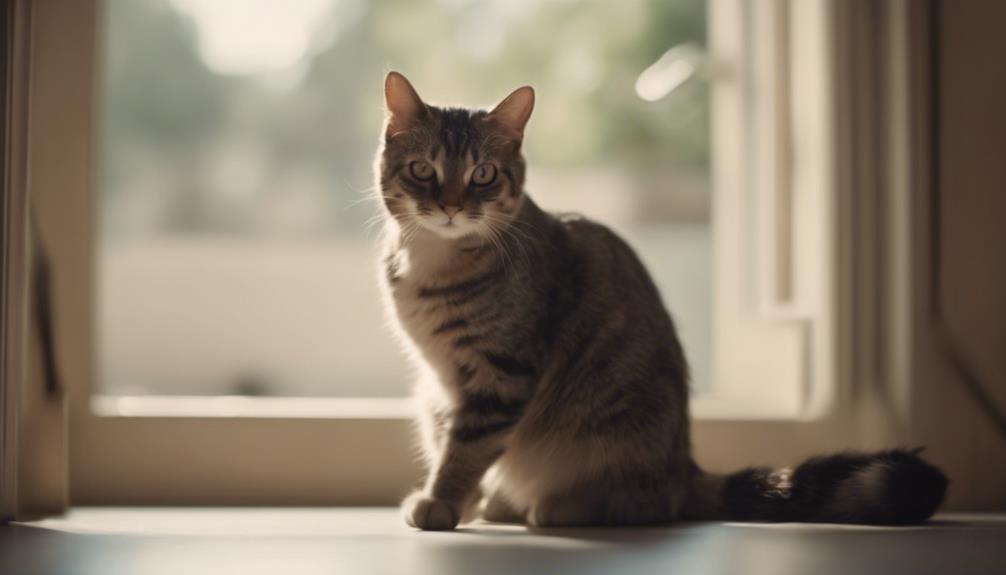
When introducing cats to small pets, it's crucial to follow safety measures to ensure a smooth interaction. Monitoring their initial interactions closely can help gauge their compatibility and prevent any potential harm.
Providing separate living spaces initially can also help the pets adjust to each other's presence before full integration.
Safety Measures for Introductions
Ensuring a smooth and safe introduction between cats and small pets requires careful planning and gradual acclimation. When introducing cats to small pets, safety should be the top priority. Here are some precautions to take:
- Keep the small pet in a secure enclosure during initial introductions.
- Provide separate spaces for the cat and small pet to retreat to if needed.
- Use positive reinforcement techniques to reward calm and non-aggressive behavior.
- Supervise all interactions closely to intervene if necessary.
- Consider consulting with a professional animal behaviorist for guidance.
Monitoring Initial Interactions
During the initial interactions between cats and small pets, close monitoring is essential to ensure a safe and positive introduction process. Setting boundaries and establishing trust are crucial steps to facilitate a harmonious relationship between them. Positive reinforcement techniques, like rewarding good behavior with treats or praise, can help in creating a positive association during their interactions. Gradual introductions, allowing the animals to get used to each other's scents and presence from a distance before any direct contact, can help prevent potential conflicts. By carefully observing their body language and reactions, pet owners can intervene if necessary and guide the interactions towards a peaceful coexistence.
| Monitoring Initial Interactions Tips | Description |
|---|---|
| Set clear boundaries | Establish specific limits for both pets to follow. |
| Use positive reinforcement techniques | Reward good behavior to encourage positive interactions. |
| Introduce them gradually | Allow pets to get accustomed to each other slowly. |
Providing Separate Living Spaces
To safely introduce cats to small pets, it's advisable to provide separate living spaces initially. This allows both animals to become familiar with each other's scent and presence without direct interaction. Here are some tips for providing separate spaces and making gradual introductions:
- Create separate areas: Ensure each pet has its own space with food, water, toys, and a comfortable resting place.
- Rotate living areas: Switch the pets' living spaces daily to help them get accustomed to each other's scent.
- Use barriers: Utilize baby gates or pet pens to create physical separation while allowing visual and olfactory communication.
- Supervised meetups: Gradually introduce the pets in controlled environments under supervision to monitor their behavior.
- Reward positive interactions: Offer treats and praise when the pets exhibit calm and friendly behavior towards each other.
Managing Cat Predation Instincts
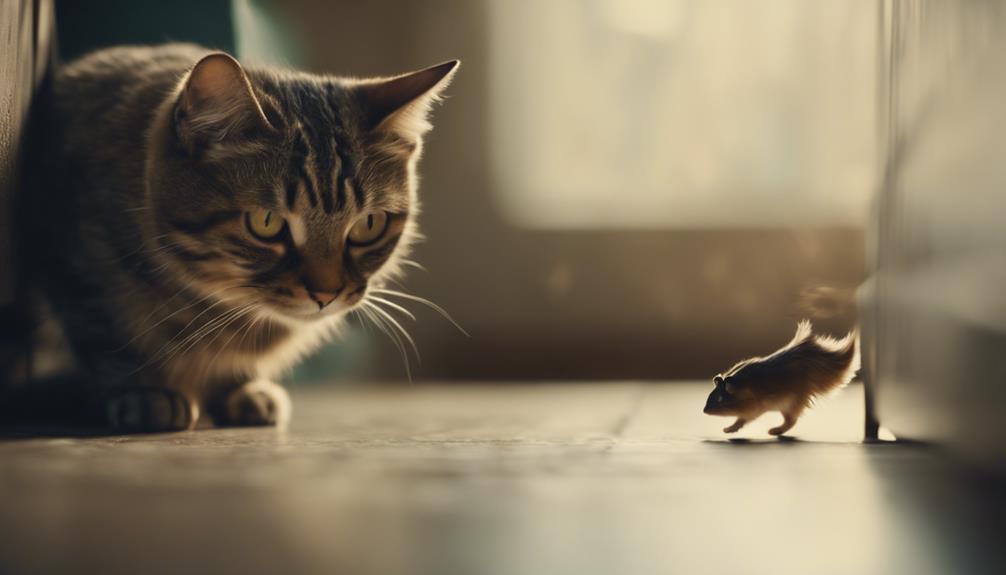
Incorporating environmental enrichment and interactive play can help redirect a cat's predation instincts towards appropriate targets. Training techniques and behavioral modification play crucial roles in managing a cat's natural hunting behaviors. By understanding a cat's instincts and providing outlets for these behaviors, pet owners can create a harmonious environment for both their cat and small pets.
| Targeted Activities | Description |
|---|---|
| Puzzle Feeders | Engage the cat's mind and simulate hunting behavior in a safe way. |
| Interactive Toys | Provide entertainment and physical activity to redirect predatory instincts. |
| Play Sessions | Regular interactive play sessions with the cat can help satisfy its hunting desires. |
| Scratching Posts | Offer appropriate outlets for scratching and sharpening claws, mimicking natural behaviors. |
Creating a Safe Environment for Cats and Small Pets
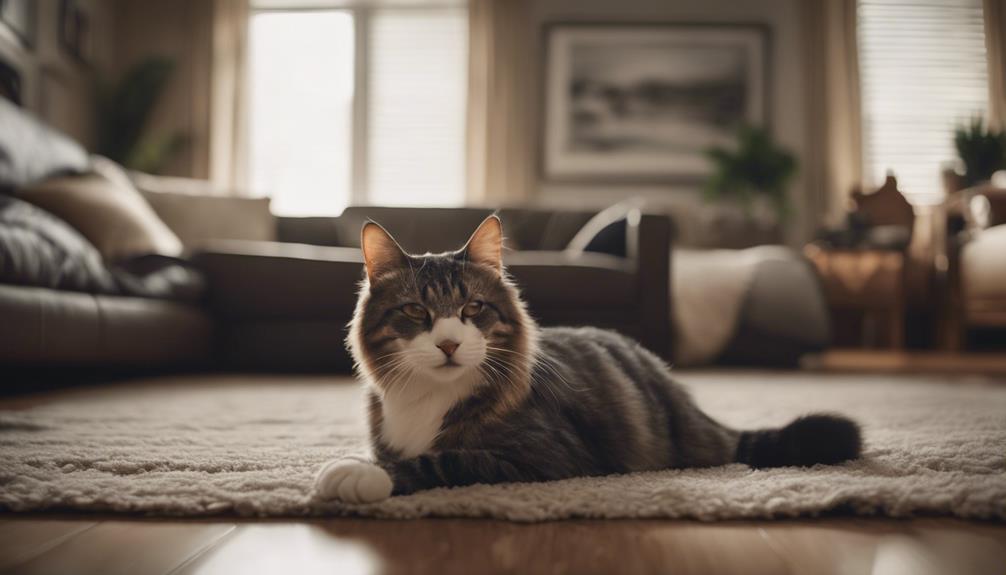
To ensure the safety and well-being of both cats and small pets, it's essential to create an environment that minimizes potential conflicts and risks.
- Pet Introductions: Properly introduce cats and small pets gradually in a controlled environment to reduce stress and prevent aggressive behavior.
- Safety Measures: Implement safety precautions such as secure enclosures and barriers to avoid any accidental confrontations between cats and small pets.
- Behavior Management: Use positive reinforcement training techniques to encourage good behavior and discourage negative interactions between cats and small pets.
- Peaceful Cohabitation: Provide separate resting areas, feeding stations, and litter boxes to allow each pet their space and reduce territorial disputes.
- Supervision: Regularly monitor interactions between cats and small pets to address any signs of tension or aggression promptly.
Monitoring and Nurturing the Relationship
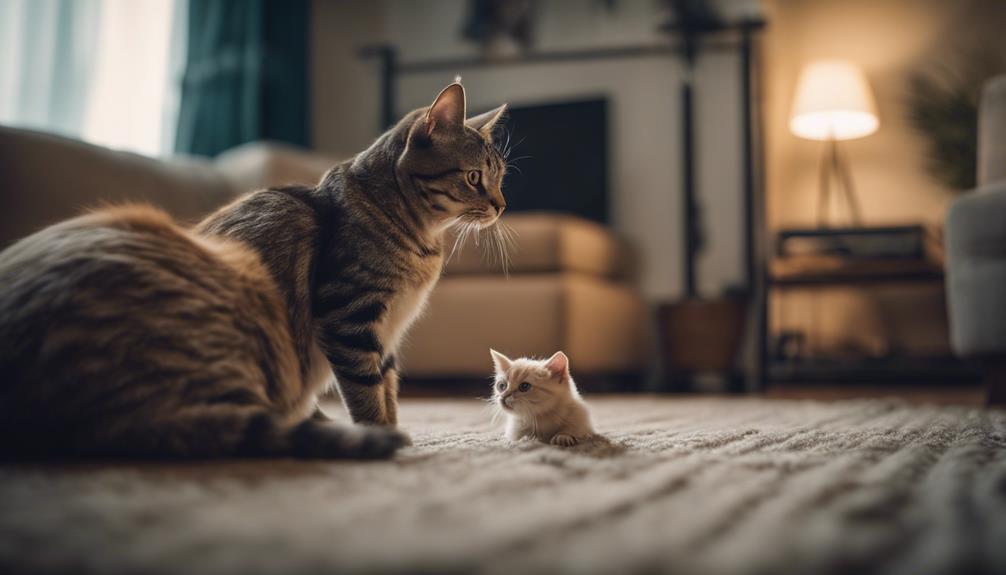
Monitoring and fostering a harmonious relationship between cats and small pets requires consistent observation and positive reinforcement. Communication techniques play a crucial role in understanding the dynamics between the animals. Observing their body language, vocalizations, and interactions can provide valuable insights into their relationship. Setting boundaries is essential to ensure the safety and well-being of both the cat and small pet. Clear boundaries help establish expectations and prevent potential conflicts.
Building trust between the cat and small pet is a gradual process that requires patience and consistency. Positive experiences, such as rewarding calm behavior and supervised play sessions, can help strengthen their bond. Establishing routines for feeding, playtime, and rest can create a sense of predictability and security for the animals. Consistent routines help reduce stress and anxiety, contributing to a more harmonious relationship.
Frequently Asked Questions
Can Cats and Small Pets Ever Become Best Friends and Play Together Like Siblings?
In the world of pets, forming close bonds and playing like siblings is achievable between cats and small pets. Playtime dynamics and trust building are crucial. Proper socialization techniques and understanding behavioral cues can foster a harmonious relationship.
How Can I Tell if My Cat Is Feeling Jealous or Threatened by My Small Pet?
When it comes to recognizing jealousy or threats between a cat and small pet, paying attention to body language and signs is crucial. Managing jealousy behavior involves creating separate spaces and positive interactions to ease tensions and promote harmony.
Are There Certain Breeds of Cats That Are More Likely to Get Along With Small Pets?
Certain cat breeds exhibit better compatibility with small pets due to their social nature. Observing behavioral cues, providing appropriate training techniques, and early socialization methods can enhance the likelihood of harmonious interactions between cats and small pets.
What Can I Do if My Cat Shows Aggression Towards My Small Pet Despite Following Introduction Guidelines?
When a cat displays aggression towards a small pet despite following introduction guidelines, owners can employ training techniques and behavioral therapy. Consistency, positive reinforcement, and seeking professional guidance can help address and modify the aggressive behavior.
Is It Possible for a Cat and Small Pet to Form a Bond Even if They Have Had a Rocky Start?
Bonding progress between a cat and small pet is possible despite a rocky start. Consistent positive interactions, patience, and trust-building activities can foster a harmonious relationship. Gradual introductions, supervision, and understanding their individual needs are key.











